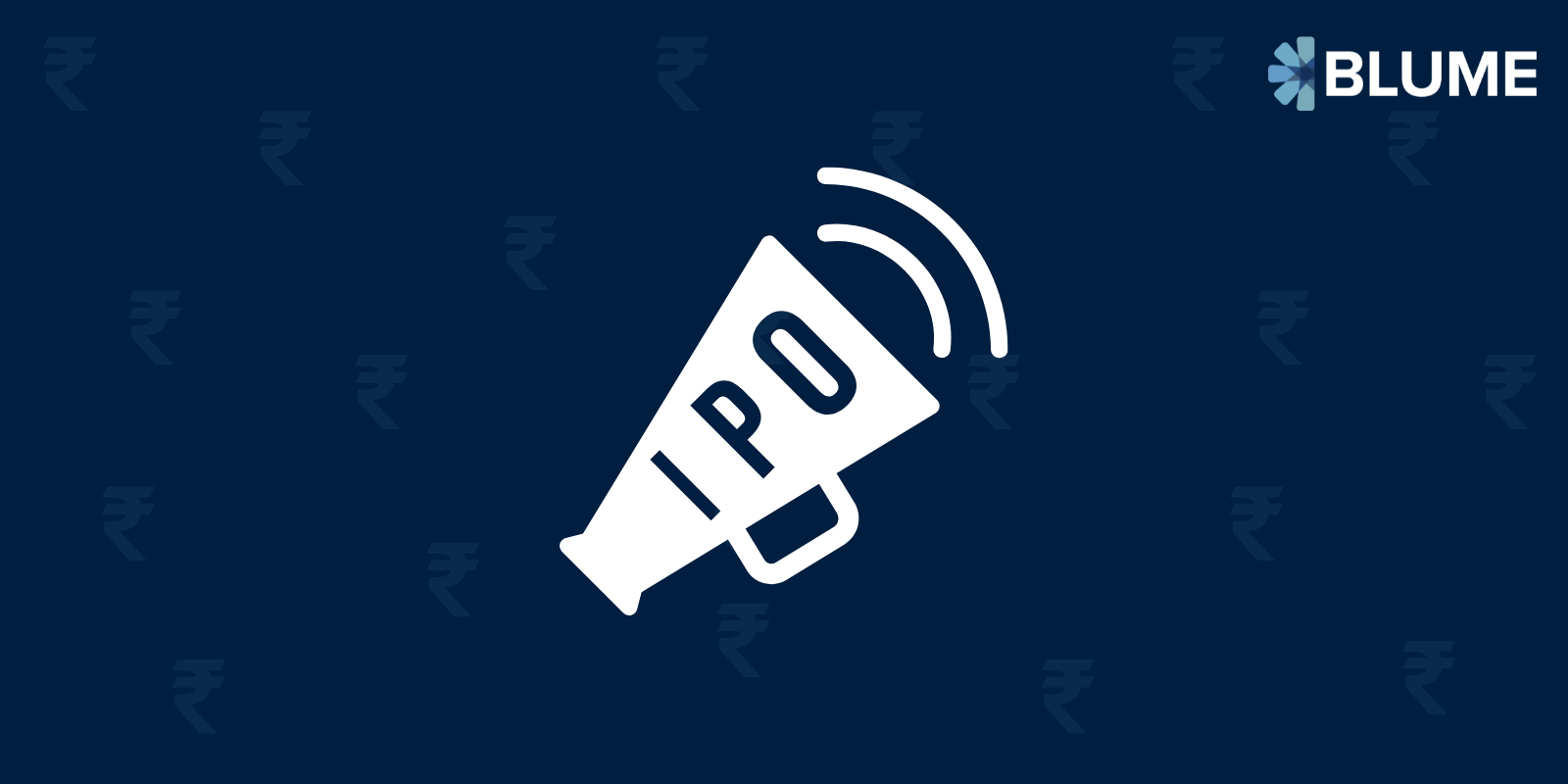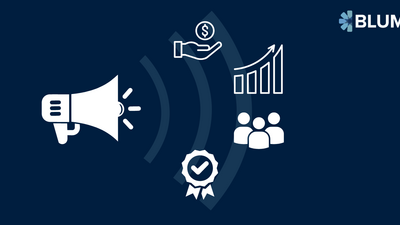“Founders often overlook IPO as a marketing campaign and don’t spend enough time with the marketing function, which is a missed opportunity. You have to convince investors of all sizes - HNIs, institutional, as well as retail to invest, and you are competing with multiple brands, not of the same size, with similar products, and hence differentiation is that much harder. This cannot happen by showing them just the financials. You have to share your story, your vision, and your personality as a founder. If this is not the highest form of marketing, then what is?” Ankit Chaturvedi, VP of Marketing at RateGain, a SaaS company that listed in December 2021.
We are seeing a surge in Indian companies going public, intensifying competition for public investors' wallets. In 2023, 57 companies went public, the second-highest in over a decade. The competition will only intensify as over 20 late-stage startups are expected to go public in the next 12 to 24 months.
While your company may have a well-defined USP in your category, you may still find it challenging to differentiate your listing. Five other companies from different sectors could be listing on the bourses during your IPO month. Even if they're unrelated, they will still vie for a share of the same capital pool.
I spoke to Ankit Chaturvedi of RateGain, a SaaS company that listed in December 2021, and Tripti Pandey of Honasa Consumer Ltd (holding company for Mamaearth), which listed in November 2023 about their experiences as they led the marketing campaigns for their IPOs.
In this article, I explore how founders can effectively leverage the marketing function to stand out in a busy IPO market. Key themes that I cover include:
- What does an IPO campaign look like and where does the marketing team fit?
- How IPO marketing is nothing like the marketing you've done so far.
- The importance of the founder's image.
- How to craft a compelling IPO narrative?
Let’s dive in.
If you think it's too early to involve marketing, you're late
Ankit and Tripti recommend involving the marketing function as soon as the listing timeline is set. The minimum time for a successful IPO campaign is six months, but ideally, they should be involved 12 months before the listing date, for good reasons.
Ankit: “I got involved 3 months before listing, but if I had to do it again, I'd get involved at least 9 to 12 months earlier. When RateGain listed, SaaS wasn't well understood in public markets. Public investors understood software services, but Indian B2B SaaS companies sell and list in the US. So, my work was twofold - help investors understand the category and why RateGain is the right choice in that category, which takes more time.”
While Mamaearth is a well-known consumer brand in a mature category and didn’t face this issue, Tripti adds a nuanced take on her challenge.
Tripti: “Mamaearth is well-known, but we follow a house of brands structure and the parent company, Honasa Consumer Ltd, was listing, not Mamaearth. The public perception was that Mamaearth launched Aqualogica or The Derma Co., but these are Honasa Consumer Ltd brands. We had to build awareness and identity for Honasa as a company and connect it to all its brands which they see on the shelves.”
There's also a regulatory aspect to early marketing. Before filing your DRHP (Draft Red Herring Prospectus), which usually happens 9-12 months before IPO, you have more flexibility in what you can say about your company and where.
Once the DRHP is filed, strict restrictions kick in (more on this later). So, utilize the pre-DRHP phase to build awareness about your company.
Ankit: “If you haven’t filed the prospectus, you can talk about anything - case studies, customers, do webinars, or give interviews about the industry. But once the prospectus is filed, you have to stick to what's in it. Thus, media releases before filing the prospectus are important. It helps you identify what the business readers/general population know about your company and where the gaps are.”
The listing process jigsaw and where marketing fits
The marketing function's KRA is to drum up retail investor interest in the IPO, ensuring they know enough about the company. But this can vary across companies. Here’s a closer look at the listing process and the marketing team's role.
The first big milestone is the DRHP, which takes 6 to 9 months. It's heavily templatized and driven by lawyers and bankers, but Ankit suggests involving the marketing team in drafting it.
Ankit: "Think of the DRHP as a data cloud, from which you will pull the content for the next six to eight months for all your marketing channels. Therefore, marketing should be involved in architecting the business section of the DRHP. As a marketer, it doesn't get more ‘long form’ and detail oriented than this, and as you write it, the story of your brand comes together.”
“All marketers should get deeply involved in the DRHP and ensure there’s enough content - everything with back-up notes/documents/approvals. If you're not involved and it goes to SEBI, you'll have little to talk about once the IPO campaign starts.”
This is also when the marketing team and founders should agree between the brand-led or company-led route (like Mamaearth did). Once you pick a route and file the DRHP, there’s no going back.
After filing the DRHP, you must maintain a silent period until you get observations from SEBI. During this period, you cannot talk about your business—numbers, financials, revenue, growth, new customers, or anything else. Only business-as-usual (BAU) communication is allowed, and anything not marked as BAU before filing the DRHP is off-limits.
SEBI may flag something as not business as usual and ask you to take it down, so maintain evidence that this is business-as-usual communication done before the DRHP was filed.
Once you have the final observations before the RHP filing, you get a window for the IPO campaign. Before the IPO, marketing focused on selling products, but now, the target audience shifts to potential investors. Even if they've seen your ads or used your products, they need to understand who you are as a company.
Tripti: “This is when traditional advertising on TV and print starts. Companies put out their corporate films as ads to tell the full story behind the product on shelves. Nykaa, Delhivery, and others listed in the last few years all released brand films.”
During this period, some companies invest heavily in TV and print media advertising to build their corporate brand. Nykaa heavily advertised on TV, while Campus Shoes used both TV and print. Delhivery also invested significantly in print media. On the other hand, Cello was conservative, increasing TV ads but keeping print ads minimal with one or two Times of India ads. There’s no one-size-fits-all approach for using traditional media for your IPO campaign.
Digital marketing is very important in the IPO campaign. While you can do paid marketing, you can't run a performance marketing campaign asking investors to buy your shares, like showing ads on Facebook saying, ‘click here to buy my stock.’
Ankit: “We used YouTube for education and Twitter for general IPO awareness. We worked with influencers, but used pre-verified messages aligned with the prospectus. Check with your lawyers on the latest SEBI regulations for digital channels; they've changed since RateGain listed.”
You can be creative and try other media channels, like local language ads in regional newspapers or high-visibility out-of-home media for your sector/investor segment.
Ankit: “We had to go beyond what RateGain does and emphasize the importance of young India's travel aspirations and why it's the right time to invest in RateGain. We translated this message for regional publications, including Amar Ujala, Jansatta, Dainik Bhaskar, and Gujarati newspapers, read by retail investors in UP and Gujarat to talk about travel, its opportunities, and recovery post-pandemic.”
The legal department must validate all marketing material released after DRHP filing. This applies to print, TV, digital, OOH, events, brochures, and even flyers.
TV or event appearances are considered marketing. If key management personnel appear at an event or give an interview, the questions must be pre-approved, and they cannot respond outside the DRHP.
Ankit and Tripti agreed that this takes getting used to as it's different from how a marketing team works, so they need to plan all marketing materials well in advance.
You start media and analyst roadshows in a 2-week window after posting the RHP filing. The marketing team and bankers collaborate to organize events in local markets to engage with retail investors/HNIs and analysts. These gatherings are small but disproportionately impactful. For example, HNIs rely on analysts' opinions before investing.
Tripti: “These events are very important and it's up to you how much you want to do. We chose Ahmedabad and Mumbai as they are large retail investor markets. Other local markets like Surat, Jaipur, Lucknow, and Calcutta are also important for retail and HNI investment.”
Companies also do out-of-home and print ads around these events. You can continue mainstream marketing in parallel. Consumer brands tend to amp up their marketing spend across mass media channels in the run-up to their statutory ads.
After this phase, you do statutory ads - price band announcement, issue opening ad, issue closing ad, and any other SEBI requirements.
You can go scorched earth and place these ads in all print newspapers or choose the top business dailies or regional newspapers. Your media strategy depends on your budget and how well your company and its narrative are already known.
How to build the IPO narrative
If your category isn’t well understood or mature, you’ll face a big hurdle in narrative building - you won’t have comparable companies to showcase to investors. Saying we're unique and there are no comparables won’t cut it.
Ankit: "Initially, we said, 'Oh, we are unique and don’t have any competitors,' which didn't attract investors because it didn't address their main concern. They want to know how you compare to their current investments and if you can generate X% returns. So we needed an answer to that.'
One way to tackle this is to create a narrative about the sector closest to you. Justify why it's the right comparison set for you and how your company compares with it.
RateGain used the well-understood IT services sector to explain SaaS and its advantages—better operating leverage, lower scaling costs, and faster margin growth. They leveraged data from publicly available SaaS reports to show how a SaaS company can become like TCS or Wipro in the long run with better returns.
Finding the tailwinds/headwinds in your sector and integrating them into your narrative is another important aspect of narrative building. Understanding geopolitics and economics is critical for marketers involved in IPO or investor communications.
RateGain anchored its communication on the size of the travel sector and the opportunity for investors to buy during the COVID dip. It also spoke about how travel is under-penetrated in India and how tech will play a crucial role as it scales.
Investors will closely scrutinize your story, category, and projections before they hand over their money to you.
Ankit: “You can't go to investors thinking everything's great and tell them that your company will always make a lot of money. They won't take you seriously. Be pragmatic. Know your weaknesses before investors point them out.”
Fall back to Product Marketing 101: make a list of questions investors can ask to show what is wrong with your business and prepare responses. Keep adding to it as your campaign progresses.
Your pitch deck is an important collateral when pitching your narrative. Ankit suggests the marketing team should own the pitch deck for the IPO campaign.
Ankit: “Bankers’ pitch deck templates have a specific format. You can tell them what you want about your company, but they want to fit it into the format because they are working with 30 more companies.”
“It's your company’s story. You've lived it and dreamt about its future. You want the reader to visualize it uniquely, with certain colors and images. When you don't see it, you feel a disconnect as a marketer. The only way to resolve it is to take over the pitch deck and company narrative completely.”
Here are Ankit's suggestions to improve your pitch deck:
- Write the story for an investor, not a customer.
- Simplify the content in each slide to make it easier for the reader to understand your industry. Assume they don’t know anything about it.
- Use section breakers creatively and include logos of prominent clients. Even if people don’t fully understand what you are saying, seeing a Fortune 100 company buying from you boosts their confidence.
Importance of the founder’s time and image
The founders are the biggest marketing asset for a startup going for IPO. As a CMO, you should set rules of engagement with them to allocate time for the IPO campaign.
Tripti: “The founders, Varun and Ghazal, led communication about the parent company. They understand media and are closely linked to Mamaearth. So their presence helped establish Honasa's identity as the company that owns not only Mamaearth but 5 other sub-brands.”
Ankit emphasizes how the founder's perception by the media and investors can have a disproportionate impact on your IPO campaign.
Ankit: “If you're going public in India, the money is asked on behalf of the founder(s). Public market investors are more conservative than the private ones you've worked with and judge you differently. They want to see if your founder has a clean image, how is their social media presence, how much are they invested in the business, their origin story, involvement in associations/causes beyond business, practicality about the market opportunity, and humility to listen to others.”
Investors use these signals to build their mental model about the founder - Can I trust them with my money? Do they have skin in the game? Will I be able to hold them accountable? Do they have what it takes to grow a public company? If they don't see the right signals, it can impact your IPO campaign.
The founders are the face of the IPO, but not all are comfortable with media/investors. Gaps in handling media/analyst questions can hurt the campaign. The marketing team should help founders assess their media readiness and coach them. Transitioning from a hustler startup CEO to a listed company CEO is crucial, and such media training offers high ROI.
Things to keep in mind
Your lawyers will make you change the website.
Be prepared for your lawyers to scrutinize every detail on your website during the IPO process. They will require proof for any facts, figures, or customer testimonials. For example, if you claim to serve a certain number of clients, you must provide evidence that they are active, paying customers. For customer testimonials, you'll need legally approved documents stating that the customer has authorized you to use their testimonial. If you can't substantiate a claim, your lawyer will insist on removing it. This can impact your go-to-market strategy, as you may be restricted in what you can say on your website and social media.
IPO budget
The marketing budget for an IPO is usually finalized as a percentage of the issue size, generally ranging from 0.3% to 0.8%.
How to handle negative chatter during the listing process
In the age of social media, companies and founders can easily get caught in online controversies that can harm their upcoming IPO.
The best approach is to be proactive and mindful of what you share online, considering how it might be misinterpreted or taken out of context. If a social media crisis arises, assess the situation before responding publicly. The media industry often follows the "72-hour rule," suggesting that most social media crises blow over within three days as attention shifts elsewhere.
However, this isn't a hard and fast rule. Monitor the sentiment closely in the first 12 hours of the crisis and consider whether a public response will help diffuse the situation or add fuel to the fire.
As more Indian startups prepare to go public, the importance of a well-executed IPO marketing campaign can’t be overstated. Involving marketing early, crafting a compelling narrative, and leveraging the founder's time and image can differentiate companies in a crowded market and attract investors.
For founders, the IPO is not just a financial milestone but also an opportunity to showcase their vision, values, and growth potential. By embracing the marketing aspect of the IPO process and working closely with the marketing team, founders can set the stage for long-term success in the public markets.






